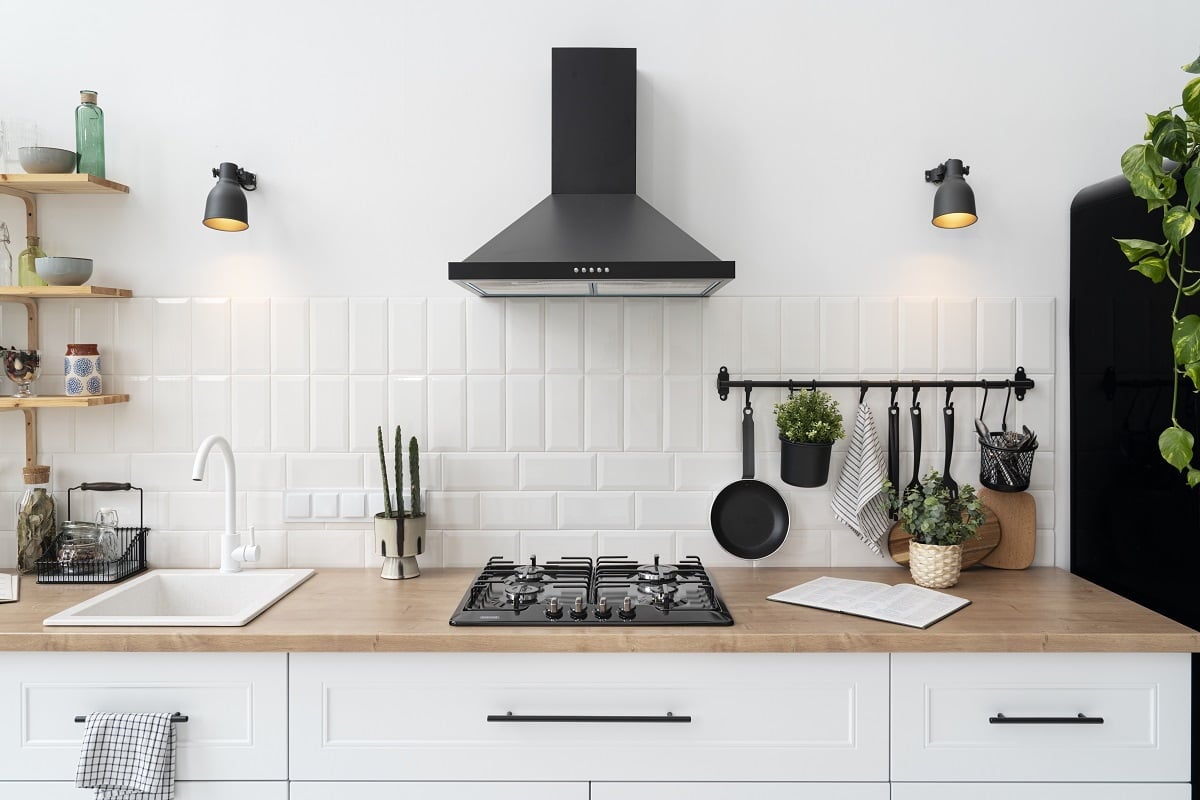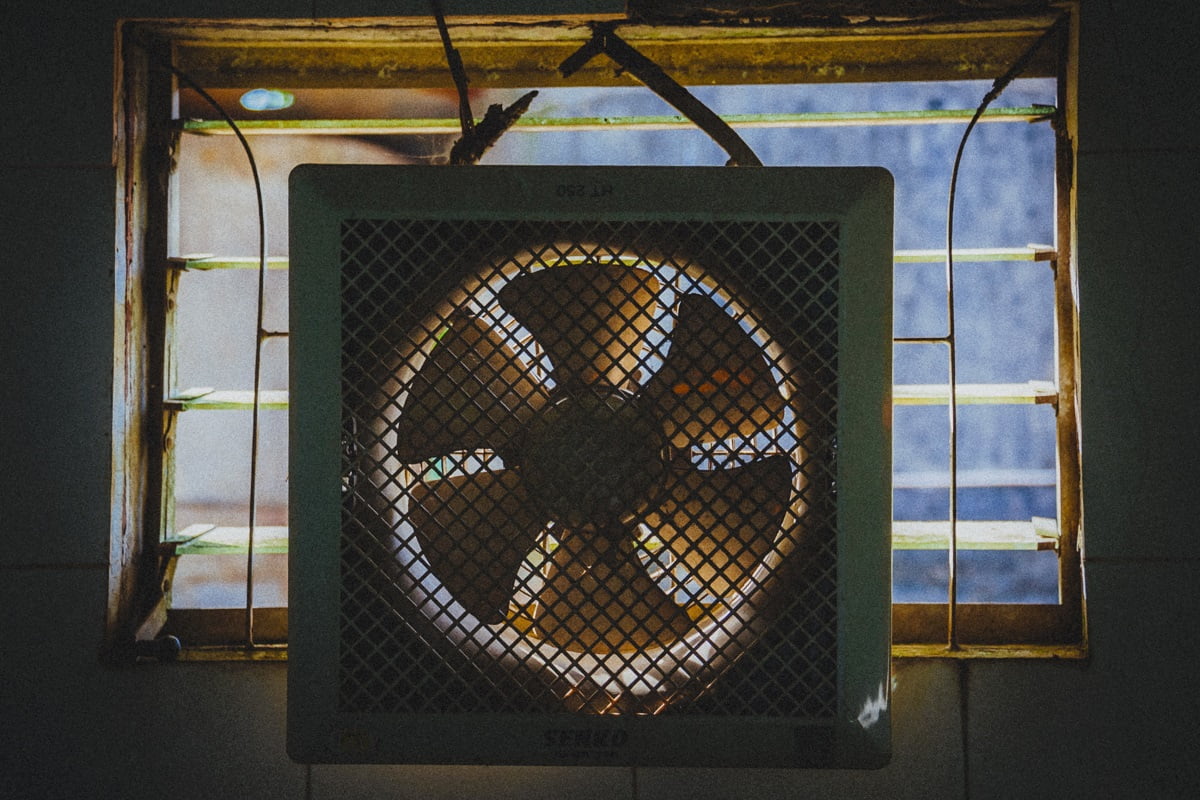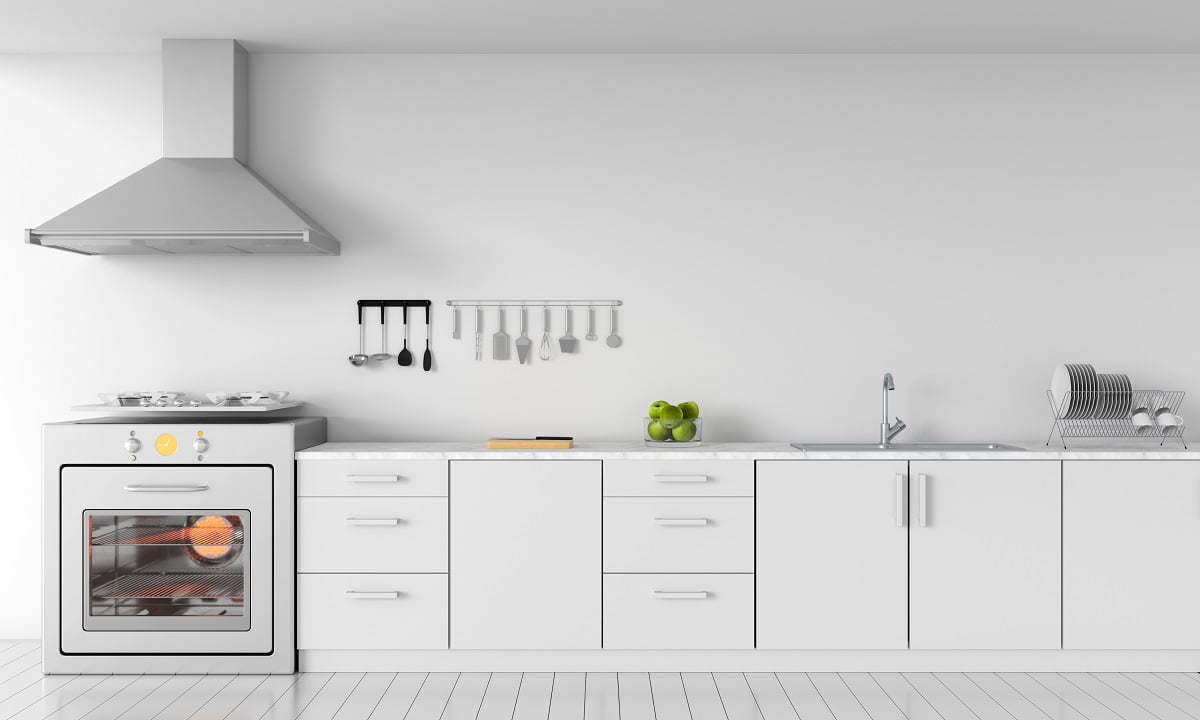An exhaust fan is an affordable appliance for removing smoke and odors from the kitchen. But it often falls short when compared to a kitchen chimney since it can remove grease and soot in addition to smoke and odors.

If you spend a lot of time in the kitchen, you’ll know how annoying it can be to cook in a thick cloud of smoke and soot. Thankfully, you can get rid of this with the help of an exhaust blower fan or kitchen chimney.
However, many people get confused when choosing between these two since they are not so well-versed with their differences. That is why we have compared them both in this guide. So, if you are curious, jump in!
How Does An Exhaust Fan Work?

In order to perform a comparative analysis between an exhaust fan and a chimney, you should have an idea about how they actually work. We’ll be starting off with the exhaust fan, followed by the kitchen chimney in a later section.
An exhaust fan is a special type of ventilation fan that helps to remove smoke and odor from the kitchen. Usually, it is installed on a ventilation duct or over the kitchen window. The airflow is directed outwards so that the kitchen smoke and odor can be sucked in by the fan blades.
Eliminating the excess smoke allows for fresh air to cycle inside the kitchen, which will allow you to keep cooking in peace. In some fans, there may be a switch to reverse the direction of airflow so that fresh air from outside can be sucked inside the kitchen more quickly.
Pros Of Using Exhaust Fans
There are several advantages to using an exhaust fan in your kitchen. We have discussed them below, so keep reading.
1. Cost-Effective
The biggest advantage of an exhaust fan is its cost-effectiveness. As you can guess from the discussion above, its design and mode of operation are as simple as a traditional ceiling fan. As such, it comes with an incredibly low price tag, which makes it a highly feasible option if you have a low budget.
2. Energy Efficient
A typical exhaust fan does not have any additional features that can consume excess electricity. Due to this fact, its overall power consumption is considerably lower than a kitchen chimney. This makes it an energy-efficient ventilation option for your kitchen.
Furthermore, a lower energy consumption essentially means that it will have little to no impact on your monthly electricity bill. Thus, it will help to enhance long-term cost-effectiveness, which is a bonus.
3. Easy To Install
Thanks to its simplistic design, an exhaust fan is pretty easy to install. You just need to make sure that there is an accessible power outlet and a ventilation opening on the wall.
The installation becomes even easier if you plan to mount it on your kitchen window. You won’t need a separate ventilation opening for such an installation, as the open window will do that job instead.
4. User-Friendly
If you want to use kitchen exhaust fans, then all you need to do is flip the switch, and the fan will start doing its job. You won’t have to go through detailed user manuals and instructions beforehand. Because of this aspect, exhaust fans are highly convenient to use.
Cons Of Using Exhaust Fans
There are certain disadvantages of using an exhaust fan, as we have discussed below.
1. Does Not Remove Grease, Oil, And Soot
An exhaust fan cannot remove soot, oil fumes, and grease particles from the kitchen air. These are considerably tougher than smoke and odors, and removing them requires powerful suction motors that exhaust fans lack.
2. Requires Extensive Maintenance
While the usage of an exhaust fan is easy, the same cannot be said about its maintenance. Over time, greasy particles may accumulate on the fan blades, which will not only make the fan dirty but will also affect its performance. And in order to restore its normal functionality, you will need to conduct extensive clean-up and maintenance, which will require some serious elbow grease.
Besides, the inability of an exhaust fan to remove grease and oil will also make the kitchen environment unhygienic. So, the kitchen cleaning effort will increase simultaneously, which can be somewhat of an inconvenience for users.
How Does A Kitchen Chimney Work?
Now that you know about exhaust fans, it is time to discuss kitchen chimneys. A typical kitchen chimney is equipped with several filters and suction motors to remove any type of particles from the air, which helps to maintain a clean cooking environment.
When turned on, the powerful suction motor sucks in the polluted air from the kitchen. Inside, the filters remove all the grease and oil particles, along with any smoke, soot, or odors. Subsequently, the contaminated air is expelled through a duct.
Pros Of Using Kitchen Chimneys
Below we have discussed the several advantages of using a kitchen chimney.
1. Removes All Types Of Particles
Thanks to the suction motors and filters, a chimney is able to remove all types of particles to give you clean air inside the kitchen. Therefore, with a good chimney, you get a kitchen space that is entirely hygienic and free from all types of contaminants.
2. Easy To Maintain
If you have a chimney installed, you can say goodbye to maintenance concerns. Since it removes all types of soot, grease, and oily particles, it indirectly helps to keep your kitchen clean. On top of that, most chimneys come with auto-clean features. This means that in addition to keeping your cooking area oil and grease free, it can keep the motors and filters inside the appliance clean as well.
3. Quick Action
Once you turn on the chimney, it clears out the kitchen air relatively quickly, thanks to the excellent suction power of the motors. This ensures ease of use, especially if you are in a hurry.
Cons Of Using Kitchen Chimneys
Despite its usefulness, there are certain disadvantages to using a kitchen chimney, as we have discussed below.
1. Expensive
The biggest complaint that consumers have about using a kitchen chimney is the cost. Even the most basic model of kitchen chimney is considerably more expensive than an exhaust fan. And if the chimney includes other features, it can further drive up the costs.
2. Consumes More Electricity
Running the powerful motors and filters of an electric chimney requires a lot of power, due to which its electricity consumption increases. This, in turn, can increase your electricity bills, which reduces its long-term feasibility.
3. Difficult To Install
Normally, a chimney is installed on the kitchen wall so that it is directly above the gas stove. It consists of several components, such as the shade, the exhaust duct, and others, all of which need to be installed separately. Because of this, the effort required to get it up and running is considerably more than an exhaust fan.
When it comes to the issue of a blower fan vs. fan, you should know that they are not the same thing, contrary to what most people believe. A blower fan is a mechanical device, while a regular fan is an electrical device. Despite having similar functionalities, a blower fan is much more powerful and offers better airflow than a regular fan. This is because the impellers used in such fans are way more efficient than the conventional blades used in a standard fan. If you are wondering, “why is my fan blowing hot air” then you might have installed the fan too low in your kitchen. In such a situation, the fan cycles the hot air generated from your cooking back inside the kitchen instead of expelling it outwards. Fortunately, such a problem can be resolved if you install the fan high enough near the ceiling. You can opt for a ductless chimney if you don’t want to go through the hassle of installing a conventional duct chimney. Such a chimney takes up relatively less space on your walls and is slightly more affordable. However, they are not as effective in removing dust and moisture from your kitchen, so do keep this in mind when going for this option.Fan Vs Chimney FAQs

Exhaust Fan Vs Chimney Final Verdict
So, now you know about the differences between an exhaust fan and a chimney. We hope that you have been able to come to a decision based on this knowledge.
An exhaust fan is a much better option for a small kitchen, considering that it takes up little space compared to a chimney. However, if you have a large kitchen, it is better to get the latter, as you can fully utilize its features without having to worry about space constraints.
That’s all we had to say in this brief guide. Until next time, folks!
